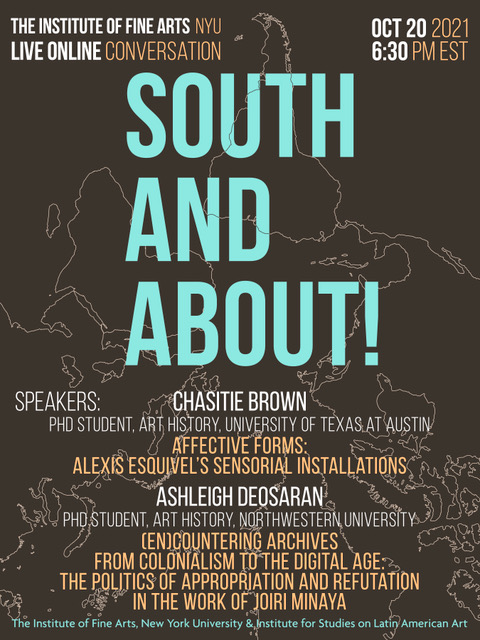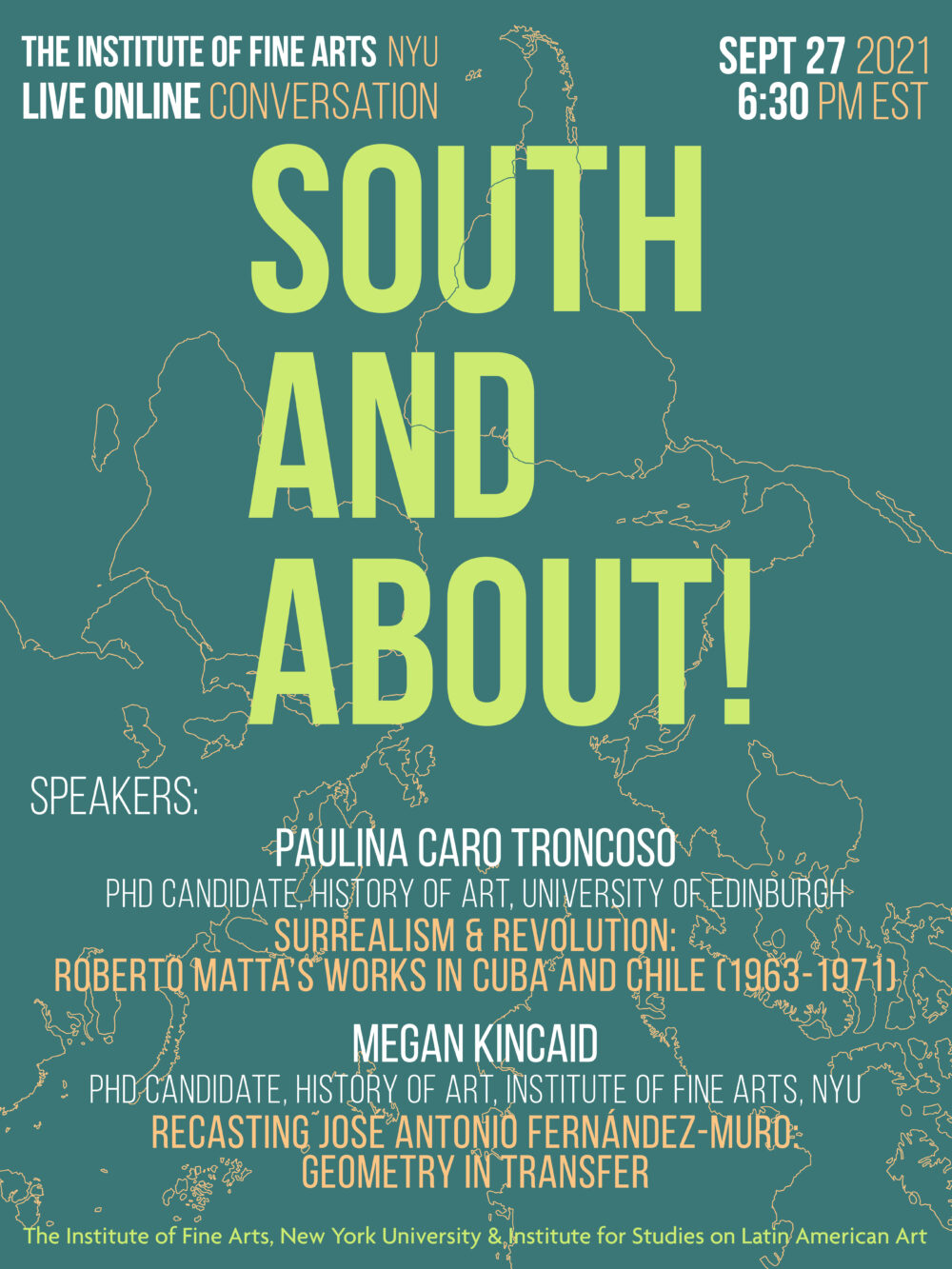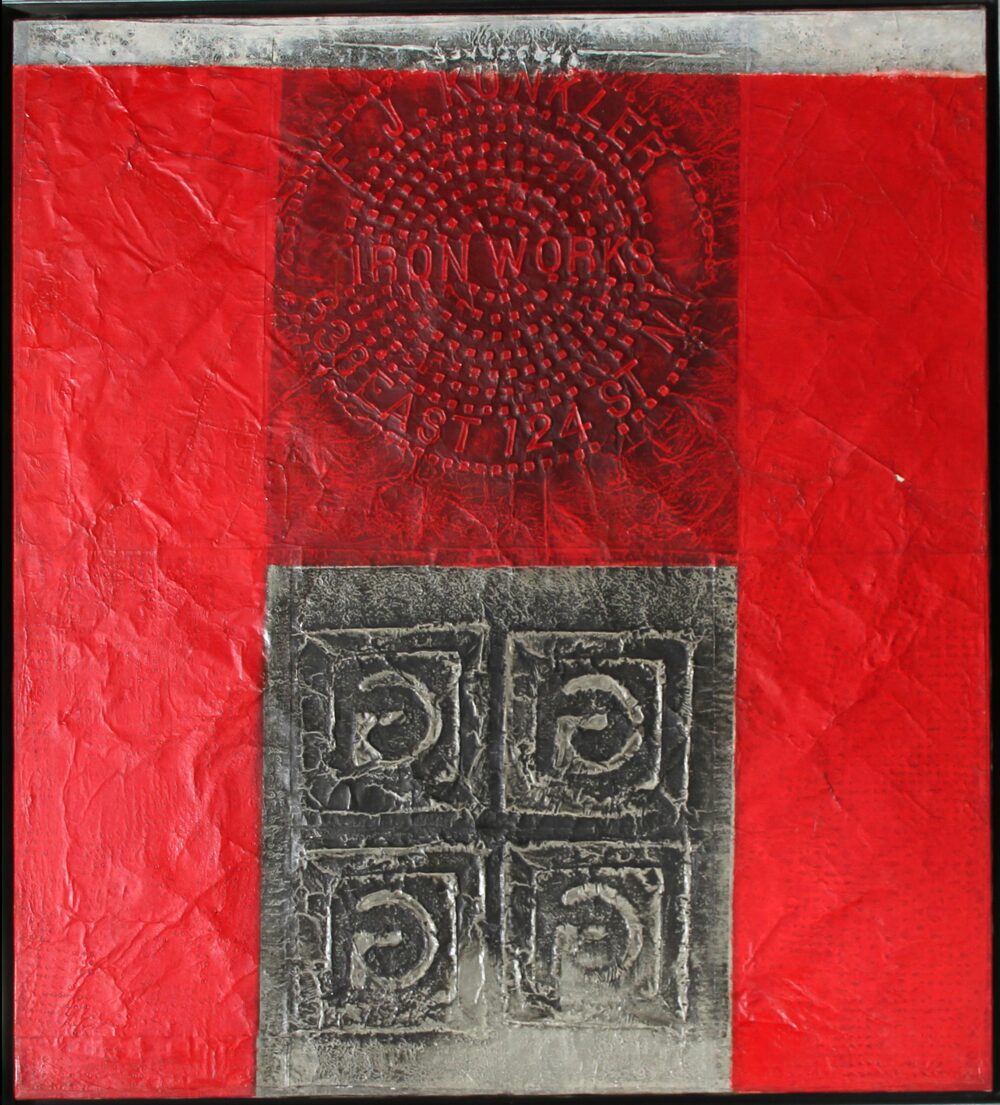South and About! Fall 2021
October 20
South & About! is a student-organized research workshop on the arts from Latin America and the Caribbean. This program invites graduate students and emerging scholars in art history and related disciplines to participate in informal discussions amongst their peers.
Affective Forms: Alexis Esquivel’s Sensorial Installations
Chasitie Brown, PhD student, Art History, University of Texas at Austin
Working in a variety of creative modes, ranging from paintings to performances, contemporary Cuban artist Alexis Esquivel is known for challenging Cuban national histories that marginalize the Black presence. This presentation examines such interventions by focusing on his relatively understudied installation, Pianissimo Concierto en Clave de Ifá (Grand Piano Concert in the Key of Ifá), that presents the lives of historic Black Cuban figures through a multisensorial approach. Commissioned for the 1997 exhibition, Ni Múscios ni Deportistas (Neither Musicians nor Athletes) held at El Centro Provincial de Artes Plásticas y Diseño in Havana, the piece takes part in a larger constellation of artworks that sought to address issues of racial prejudice within a contemporary Cuban context. Curated by Cuban art writer, Ariel Ribeaux, the exhibition was conceived as a continuation of Queloides: Parte I organized by Esquivel earlier that year in 1997 at Casa de África in Havana.
Situating Esquivel’s installation both within his oeuvre as well as the curatorial aims of the exhibition in which it was presented, I argue that the artist upends state narrativized histories of Blackness by employing a multisensorial perspective that engages with sound and touch. Drawing from affect theory, in particular Tina Campt’s conceptualizations of silent images, I demonstrate how this approach serves as a critical intervention into both accessing and creating archives for African Diasporic subjects that defies European epistemologies of knowledge production.
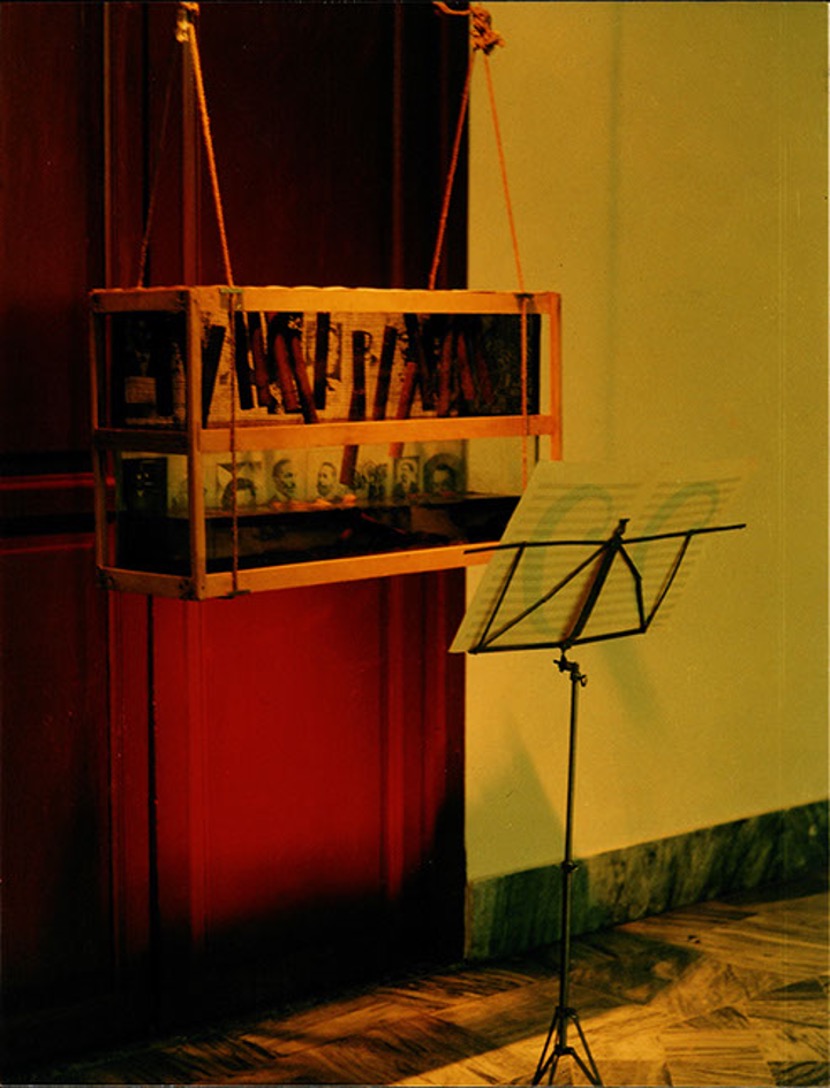
(En)Countering Archives from Colonialism to the Digital Age: The Politics of Appropriation and Refutation in the work of Joiri Minaya
Ashleigh Deosaran, PhD student, Art History, Northwestern University
This paper situates the practice of Dominican-United Statesian multimedia artist, Joiri Minaya (b. 1990), as a counter-hegemonic archive of Caribbean visuality. Minaya’s work pushes back against historic and ongoing depictions of Caribbean bodies—land and living, human and non-human—across centuries-spanning contexts, from colonial-era scientific illustrations to contemporary digital media, particularly with regards to the representation of island women and femmes. Her photography, installations, and performances deconstruct, co-opt, and critique exotifying representations of Caribbean women and trace their antecedents in historically fear-filled and fantastical images of the region and its inhabitants created by and for imperial-colonial domination. This paper pays particular attention to a less acknowledged but increasingly relevant aspect of Minaya’s practice—pixelation, digital manipulation, and the use of online platforms for creating and circulating images. This approach to the work—that not only considers the variety of media being used by the artist herself but also the connections between historic and contemporary modes of visually producing and consuming the islands and their inhabitants—parses the legacy of the colonial visual regime and its ongoing influence on how Caribbean flesh and flora are imaged and for whom those images are produced and accessed. How to reckon with the asymmetrical relations between those being represented, the image-maker, and ultimately the consumer in this complex multinational production and circulation of images, which have resulted in archives rife with Caribbean people’s bodies while largely absent of their authorship? As photographs have continued to be exported from and through the Caribbean via postcards, brochures, and now the internet, how can the concerns at the forefront of Minaya’s practice urge us to reconsider our own encounters with both physical and digital archives as visual consumers, travelers, and even art historians? Finally, a shift in Minaya’s project regarding visibility and the refutation thereof will be traced as she encounters and appropriates not only the icons but also the tools, remnants, and channels of violent visualities in order to reveal and resist them, thus creating a contemporary counter-archive of flesh, fabric, pixels, and stone.

September 27
South & About! is a student-organized research workshop on the arts from Latin America and the Caribbean. This program invites graduate students and emerging scholars in art history and related disciplines to participate in informal discussions amongst their peers.
Surrealism & Revolution: Roberto Matta’s Works in Cuba and Chile (1963-1971)
Paulina Caro Troncoso, PhD Candidate, History of Art, University of Edinburgh
Chilean Surrealist artist Roberto Matta (1911-2002) has been recognized as an important figure in both the second generation of Surrealists from the Paris group and in the beginning of the New York School in the 1940s. In Anglophone scholarship, Matta’s oeuvre has been mainly studied within this historical framework, giving little attention to the following decades when the artist made several trips to Latin America and engaged with Third World struggles. Between 1963 and 1971, Matta travelled to Cuba and Chile to participate in initiatives in line with the social, political, and cultural processes that were taking place after the 1959 Cuban Revolution and during Chile’s democratic road to socialism. How could Matta’s works from this period be inscribed in an art historical narrative that embraces the intersection of Surrealism and politics in Latin America? Focusing on a body of work Matta made in Cuba in the 1960s and in Chile in the early 1970s, this paper explores the impact that the aforementioned revolutionary processes had on Matta’s artistic practice.
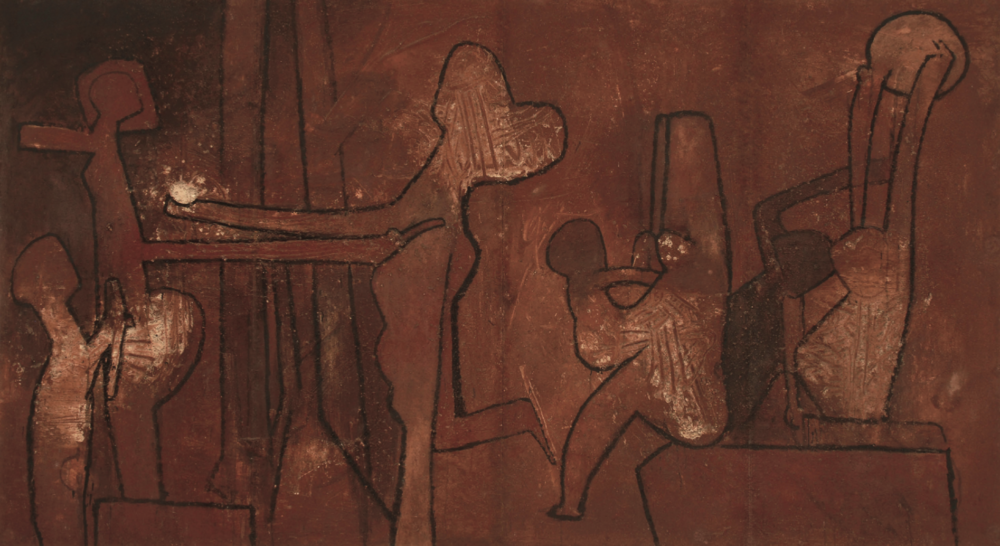
Recasting José Antonio Fernández-Muro: Geometry in Transfer
Megan Kincaid, PhD Candidate, History of Art, Institute of Fine Arts, NYU
Held in conjunction with the forthcoming exhibition at the Institute for Studies on Latin American Art (ISLAA) José Antonio Fernández-Muro: Geometry in Transfer—the first solo exhibition dedicated to the artist’s luminous transfer paintings first developed in Buenos Aires in the late 1950s and elaborated on a decade later while living in New York City—this talk attempts to reconstruct the connections between the artist’s early affiliation with concrete abstraction and eventual integration of recognizable imagery like sewer grates and street surfaces into his compositional vocabulary. In the late 1950s, the artist started overlaying perforated metal grates and stencils onto complex and sweeping geometric assemblies. These repeated accretions of transfers produced dizzying optical effects and expressive surfaces, pushing his paintings beyond the constraints of hard-edged geometry and even evoking associations with OpArt and kinetic art. Seeking to reintroduce this critical participant in global abstraction, I will discuss a selection of masterwork paintings from ISLAA’s collection alongside never-before-displayed archival materials to reassert his centrality to Latin American modernism in both Argentina and the United States.
Brushing against the grain of other art historical narratives, which argue that Fernández-Muro came to artistic maturity only once he was in New York, this presentation will demonstrate that his celebrated New York imagery was a continuation of his ideological commitments to an unorthodox form of abstraction and precise technical facility initiated in Buenos Aires. Examining both his processual procedures and exposure to industry as catalysts for his transfer paintings, this talk charts his waning dedication to the anti-expressionist rhetoric of concrete art that marked new directions in Argentine abstraction during the period.
